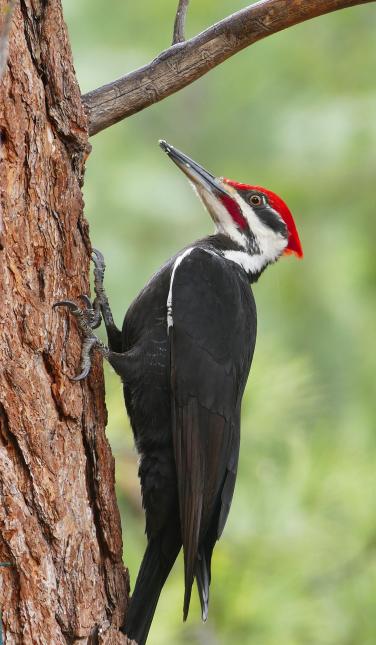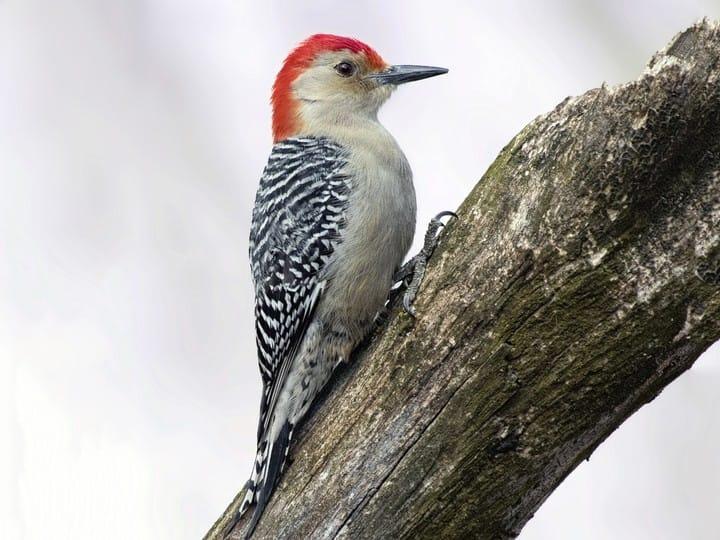Woodpeckers: A Comprehensive Guide to Understanding These Unique Birds
Woodpeckers, with their unique habits and physical qualities, have long astounded the interest of ornithologists and nature lovers alike. As we check out the intricate composition, diverse species, and eco-friendly value of woodpeckers, a deeper appreciation for these one-of-a-kind birds and the secrets they hold unfolds.

Woodpeckers' Drumming Habits
Woodpeckers exhibit a rhythmic and precise drumming behavior that serves different vital functions in their lives. This behavior is mostly linked with communication, region protection, and foraging. The distinct drumming noise is produced by the rapid pecking of their beaks versus difficult surface areas such as tree trunks, branches, and even metal objects.
Communication is a critical facet of woodpecker habits, and drumming plays a considerable role in this procedure. Woodpeckers utilize drumming to establish their visibility, bring in companions, and maintain contact with their partners and spawn. The regularity, intensity, and duration of drumming sequences convey certain messages to various other woodpeckers in the area.
In addition to communication, woodpeckers make use of drumming habits for area defense. Woodpeckers in Florida. The loud and recurring drumming works as a cautioning to possible burglars, signifying that the area is already declared. By establishing their territory through drumming, woodpeckers decrease the possibility of disputes over important resources such as food and nesting websites
Additionally, woodpeckers additionally use drumming as a foraging method. The rhythmic pecking aids them locate pests concealing beneath the bark of trees by producing vibrations that disrupt the victim's cover-up. This behavior showcases the versatility and resourcefulness of woodpeckers in utilizing their drumming abilities for multiple vital objectives.
One-of-a-kind Adjustments for Tree Climbing
Having actually understood the art of drumming to interact, protect region, and forage, woodpeckers have actually developed one-of-a-kind adaptations that promote their exceptional climbing capacities in their arboreal environments. Woodpeckers have zygodactyl feet, with two toes directing forward and two toes directing backward. These tail feathers offer stability and equilibrium, making it possible for woodpeckers to steer up tree trunks with accuracy and agility.
Additionally, woodpeckers have effective neck muscle mass and a special head structure that aid in their climbing up capacities. Their strong neck muscular tissues enable them to swiftly peck at tree bark without experiencing whiplash, while their thick head and small brain serve as shock absorbers, protecting them from the impact of duplicated drumming. These adjustments jointly allow woodpeckers to navigate the upright world of trees with effectiveness and elegance.

Duty of Woodpeckers in Ecological Communities
By foraging for insects under the my company bark of trees, woodpeckers help regulate pest populations, preventing outbreaks that could harm the overall health of the woodland. In addition, woodpeckers develop dental caries in trees that offer as critical nesting websites for a selection of the original source various other bird types, promoting biodiversity within the community.
Furthermore, the drumming and vocalizations of woodpeckers play a vital role in interaction and region facility. These noises not only offer to bring in companions however also help specify limits between different woodpecker regions, lowering disputes and promoting a harmonious conjunction within the forest community. Overall, the visibility of woodpeckers in forest communities highlights their significance as keystone species, affecting the dynamics and functioning of these environments in diverse ways.
Composition: Specialized Beaks and Feet
In the intricate web of woodland communities, the specialized beaks and feet of woodpeckers are essential adaptations that allow them to satisfy their critical environmental duties. Woodpeckers possess special physiological features that are especially designed to help them in their foraging and nesting actions.
The most unique attribute of woodpeckers is their strong, chisel-shaped beaks. These beaks are completely adjusted for exploration into wood to discover pests, larvae, and sap covert underneath the bark of trees. The solid muscles and strong framework of their beaks permit woodpeckers to peck at a rate of as much as 20 times per secondly without creating damage to their skulls.
Furthermore, woodpeckers have actually specialized feet that help in their acrobatic climbing up abilities. Their feet have two toes directing ahead and 2 toes pointing backward, offering a solid hold on upright surface areas (Woodpeckers in Florida). This one-of-a-kind foot arrangement, along with rigid tail feathers that function as an encouraging prop, enables woodpeckers to stick to tree trunks and branches with convenience while they search for food or excavate nesting tooth cavities
Woodpecker Types Diversity
Woodpeckers are a varied group of birds found throughout different communities worldwide, with over 200 known varieties displaying adaptations to various settings. Woodpeckers have evolved to live in a variety of environments, from woodlands and forests to grasslands and deserts, each offering special challenges that have actually influenced the advancement of unique woodpecker species.
An additional contributing factor to woodpecker types diversity is their specialized feeding actions. Different varieties have advanced to make use of various food resources, such as insects, tree sap, fruits, and nuts, causing the development of details adaptations in beak form, size, and stamina. These adaptations allow woodpeckers to forage efficiently in their particular environments, decreasing competitors among varieties and promoting specific niche distinction. Additionally, geographical isolation and historical variables have contributed in forming the distribution and variety of woodpecker varieties, resulting in the vast range of specialized adjustments seen in these remarkable birds.

Verdict
To conclude, woodpeckers are interesting birds that exhibit unique drumming actions, specialized adaptations for tree climbing, and play important duties in environments. Their basics anatomy, consisting of specialized beaks and feet, enables them to thrive in their setting. With a diverse array of woodpecker types found worldwide, these birds are crucial for preserving the health and equilibrium of forests and timberlands. Comprehending and valuing the complexities of woodpeckers can provide useful insights right into the environment.